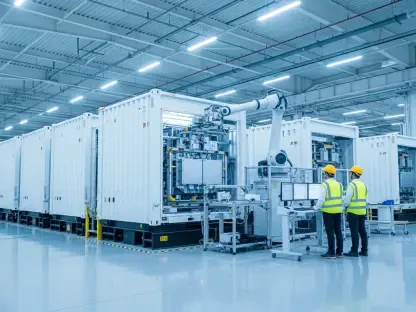The electric vehicle (EV) industry has become a beacon of innovation and sustainability, heralding a shift toward environmentally friendly transportation. As this sector strives to reduce carbon emissions and enhance vehicle efficiency, the role of rare earth materials becomes increasingly pivotal. However, rare earth shortages have emerged as a significant obstacle, threatening to stall the momentum of EV adoption. This analysis delves into the nuances of how these shortages impact EV growth and reverberate across related industries.
Understanding the Role of Rare Earth Materials in EVs
Rare Earth Dependency in Electric Vehicles
Electric vehicles rely on rare earth materials such as neodymium and lithium, which are crucial for manufacturing batteries and magnets used in electric motors. Developed economies are witnessing a sharp rise in EV adoption, influencing global demand for these materials exponentially. Statistical data portray that EVs accounted for approximately 2.5% of global car sales last year, showcasing rapid market expansion yet highlighting the nascent status of the sector. The symbiotic relationship between rare earth materials and EV production underscores the challenges posed by scarcity in these resources.
Real-World Impact of Rare Earth Utilization
Numerous automotive manufacturers are pioneering new uses for rare earth materials in EV production. Case studies reveal innovations by companies that harness these materials effectively, driving advancements in efficiency and performance. Leaders such as Tesla and BYD have set benchmarks in navigating dependencies on rare earths, incorporating substitutes where feasible without compromising quality. These examples offer a glimpse into industry resilience but also foreshadow stifling consequences as shortages loom.
Industry Expert Perspectives
A multitude of experts have shared insights regarding rare earth shortages’ implications on the EV industry. Supply chain complexities are a critical concern voiced by industry figures, who argue that current shortages could hamstring production timelines and elevate costs. Specialists propose strategies to diversify sourcing channels and adopt alternatives, mitigating potential disruptions. These conversations accentuate the urgent need for manufacturing evolution, adapting to newfound challenges posed by finite rare earth resources.
Future Outlook: Navigating the Challenges Ahead
Advancements in technology and policy frameworks offer promising pathways to address looming shortages. Innovation in recycling techniques, improved mining practices, and novel synthetic materials may alleviate the strain on rare earth supplies, steering the industry away from scarcity. Collaborative efforts incorporating both environmental safeguards and strategic policy interventions hold potential to reshape sectoral dynamics, easing threats to automotive production continuity. Yet, persistent challenges remain, necessitating sustained commitment to surmount emerging obstacles effectively.
Conclusion and Call to Action
The discourse on rare earth shortages reveals multifaceted challenges hampering EV growth and related industries. With production uncertainties looming, strategic foresight and cooperation are paramount to circumvent these issues. The industry must pursue innovation, embracing technological breakthroughs, and policy shifts to secure sustainable growth. As EVs continue to evolve, stakeholders should seize opportunities to foster resilience and creativity, crafting a roadmap toward a prosperous, environmentally conscious future.









